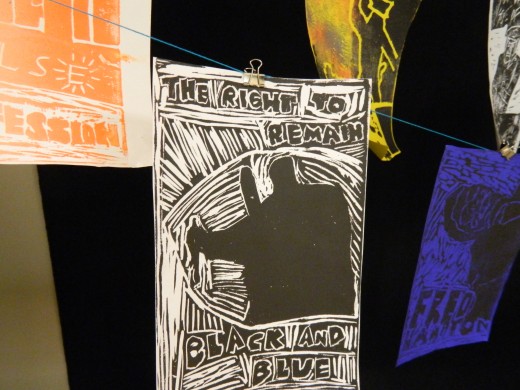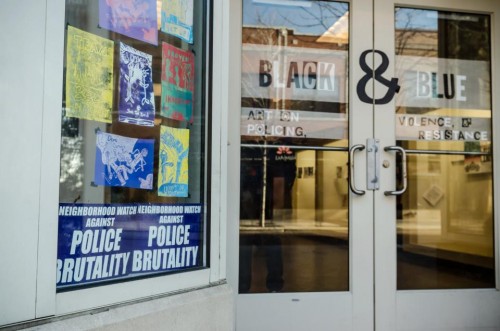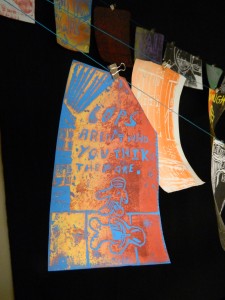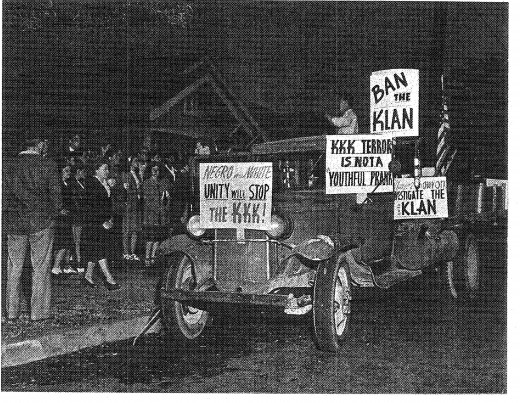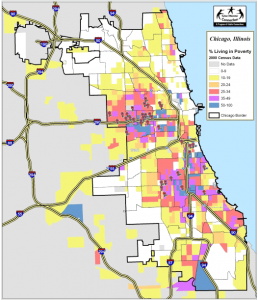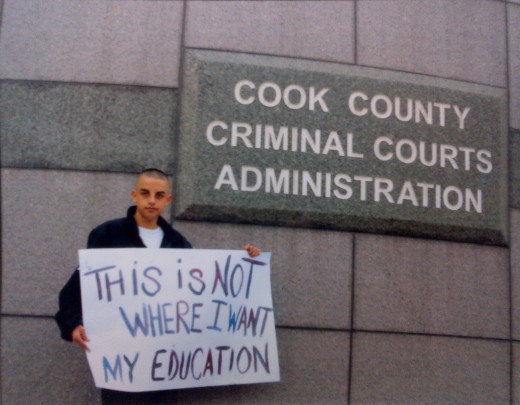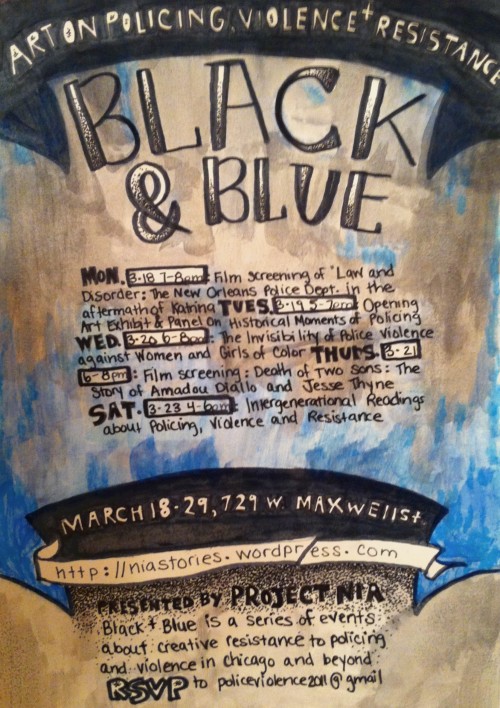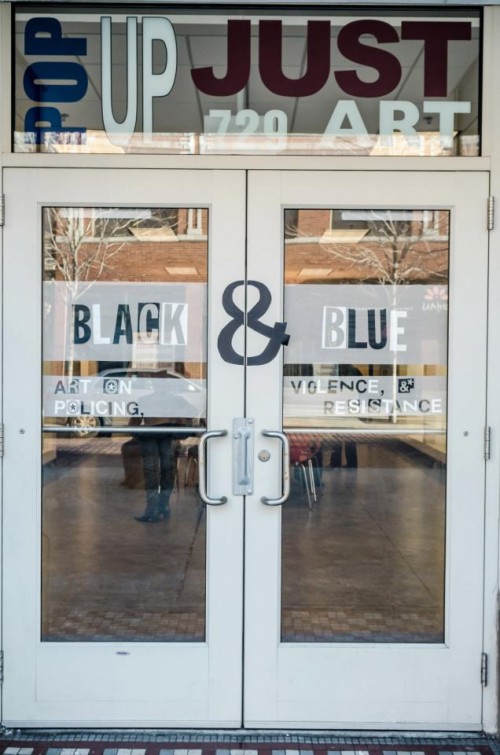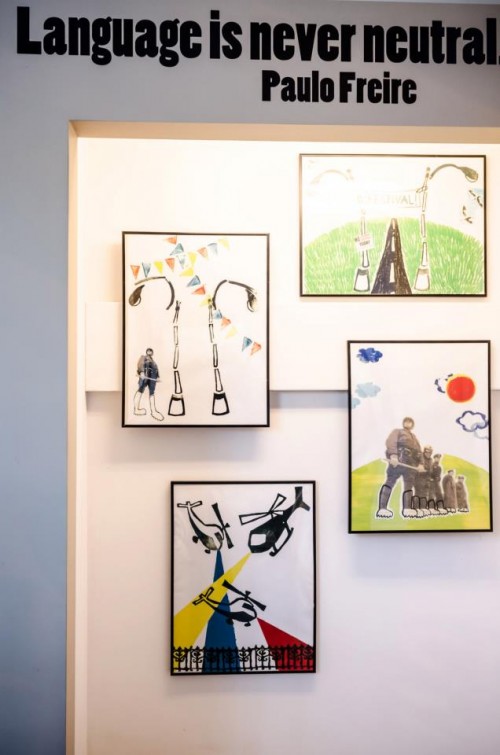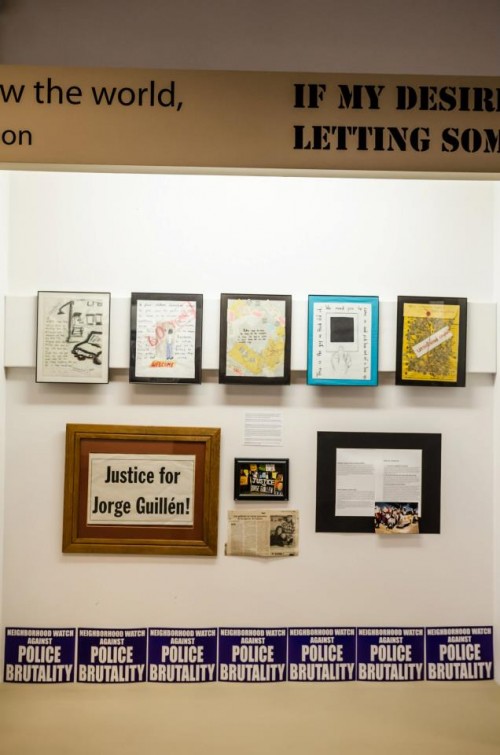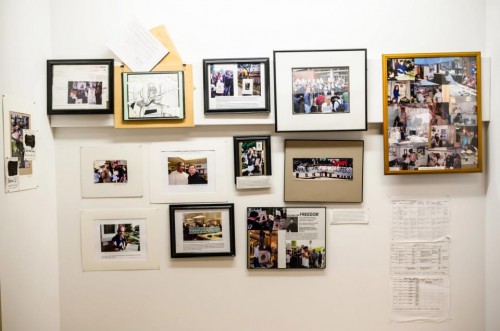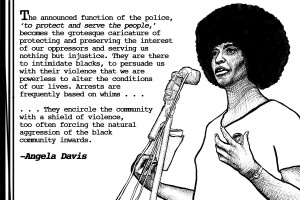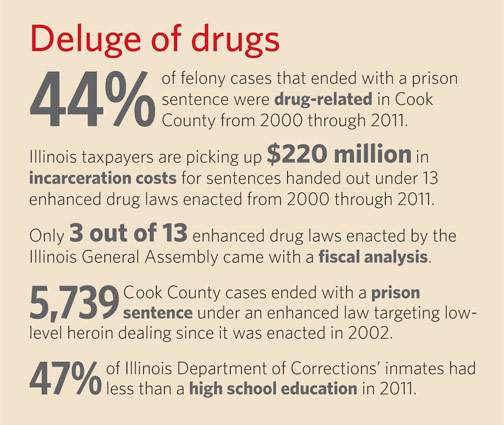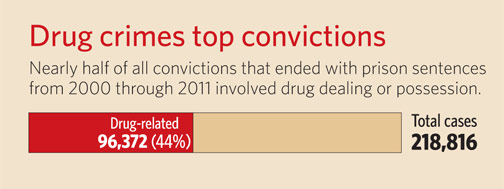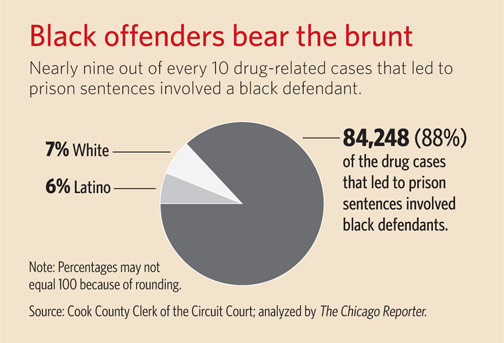Guest Post: Using Art to Talk about Police Violence with High Schoolers
My friend Billy Dee, who volunteers with my organization and often collaborates with me on art-related projects wrote the following reflections about ze’s visit with Bowen High School students as part of the Black and Blue: Art on Policing, Violence and Resistance exhibit.
This past week I had an opportunity to meet students from Bowen High School who shared amazing artworks with Project NIA for an exhibit entitled Black & Blue: Art on Policing, Violence, and Resistance. The students made linocut prints in response to the topic of the exhibit with art-teacher Bert Stabler. They generously shared over a hundred colorful and thought provoking pieces that we were able to display in both the gallery and the storefront windows, where they caught the eye of many passers-by at the U.I.C. SJI (Social Justice Initiative) Pop-Up art Gallery. I was impressed by the students artworks as they addressed issues ranging from the systemic racist violence in the C.P.D., to personal experiences of police violence, to the police harassment faced by trans people. One artwork that caught my eye as we installed the exhibit was a piece in which the artist had engraved an image of a C.P.D. badge accompanied by the phrase “we dirty up the black, but keep the white clean”. I was able to meet the young woman who made this piece during the visit, and told her that I thought her piece made a strong statement. What she said in response was interesting to me- she said something to the effect of: “I didn’t want to offend anybody, but that is what I was thinking, so that is the phrase I used in my piece.” I made sure to explain that making a strong statement in one’s art is something I respect very much, and that I found the piece both beautiful and also impactful.
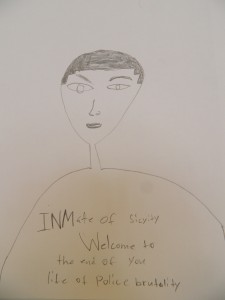 I had a chance to talk to several students, and almost everyone I talked to mentioned some type of negative experience with the CPD. As we talked, we reviewed the stated purpose of the police (“to serve and protect”). A few students noted that the police can (and sometimes do) “serve and protect” but too-often this takes place on their own terms.
I had a chance to talk to several students, and almost everyone I talked to mentioned some type of negative experience with the CPD. As we talked, we reviewed the stated purpose of the police (“to serve and protect”). A few students noted that the police can (and sometimes do) “serve and protect” but too-often this takes place on their own terms.
One young woman talked about the way that the police target her home neighborhood of Roseland. She talked about the fact that she sees cops all over the place, but does not let them intimidate her as she knows her rights when they approach on the street (yeah!). During the visit, a young man who was not able to finish his linocut for the exhibit shared a drawing to add to the artworks. Below a simple portrait, he wrote the phrase “Inmate of Society welcome to the end of You life of Police Brutality”. In addition to the artwork, the exhibit included a map on which visitors could use pins to mark locations in the city of Chicago where they had witnessed or experienced a negative interaction with police. During the visit, someone pinned an index card onto the map with the words “my sister was shot and killed”.
